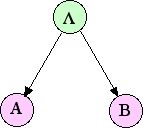Formulae may render HTML
|
|
{{Numbered block|:|<math>y=ax+b</math>|Eq. 3}}
|
 | | (Eq. 3) |
|
|
{{Numbered block|:|<math>ax^2+bx+c=0</math>|Eq. 3}}
|
 | | (Eq. 3) |
|
|
{{Numbered block|:|<math>\Psi(x_1,x_2)=U(x_1)V(x_2)</math>|1}}
|
 | | (1) |
|
|
{{Numbered block|:|Fe<sup>3+</sup> + H<sub>2</sub>O<sub>2</sub> → Fe<sup>2+</sup> + HOO<sup>•</sup> + H<sup>+</sup>|2}}
|
| Fe3+ + H2O2 → Fe2+ + HOO• + H+ | | (2) |
|
|
{{Numbered block|:|<chem>H+ + CO3^2- -> HCO3^-</chem>|3}}
|
 | | (3) |
|
Indentation
|
|
{{Numbered block||<math>\mathbf{a}(t)=\frac{d}{dt}\mathbf{v}(t)</math>|3.5}}
|
 | | (3.5) |
|
|
{{Numbered block|:|<math>\mathbf{a}(t)=\frac{d}{dt}\mathbf{v}(t)</math>|1}}
|
 | | (1) |
|
|
{{Numbered block|::|<math>\mathbf{a}(t)=\frac{d}{dt}\mathbf{v}(t)</math>|13.7}}
|
 | | (13.7) |
|
|
{{Numbered block|:::|<math>\mathbf{a}(t)=\frac{d}{dt}\mathbf{v}(t)</math>|1.2}}
|
 | | (1.2) |
|
Formatting of equation number
|
|
{{Numbered block|1=:|2=<math>\mathbf{a}(t)=\frac{d}{dt}\mathbf{v}(t)</math>|3=3.5|RawN=.}}
|
 | | 3.5 |
|
|
{{Numbered block|1=:|2=<math>\mathbf{a}(t)=\frac{d}{dt}\mathbf{v}(t)</math>|3=<3.5>|RawN=.}}
|
 | | <3.5> |
|
|
{{Numbered block|1=:|2=<math>\mathbf{a}(t)=\frac{d}{dt}\mathbf{v}(t)</math>|3=[3.5]|RawN=.}}
|
 | | [3.5] |
|
|
{{Numbered block|1=:|2=<math>\mathbf{a}(t)=\frac{d}{dt}\mathbf{v}(t)</math>|3='''[3.5]'''|RawN=.}}
|
 | | [3.5] |
|
|
{{Numbered block|1=:|2=<math>\mathbf{a}(t)=\frac{d}{dt}\mathbf{v}(t)</math>|3=<Big>'''[3.5]'''</Big>}}
|
 | | ([3.5]) |
|
|
{{Numbered block|1=:|2=<math>\mathbf{a}(t)=\frac{d}{dt}\mathbf{v}(t)</math>|3=<Big>'''[3.5]'''</Big>|RawN=.}}
|
 | | [3.5] |
|
|
{{Numbered block|1=:|2=<math>\mathbf{a}(t)=\frac{d}{dt}\mathbf{v}(t)</math>|3=<math>(3.5)</math>|RawN=.}}
|
 | |  |
|
Line style
|
|
{{Numbered block|1=:|2=<math>\mathbf{a}(t)=\frac{d}{dt}\mathbf{v}(t)</math>|3=<Big>'''(3.5)'''</Big>|RawN=.|LnSty=1px dashed red}}
|
 |
| (3.5) |
|
|
{{Numbered block|1=:|2=<math>\mathbf{a}(t)=\frac{d}{dt}\mathbf{v}(t)</math>|3=<Big>'''(3.5)'''</Big>|RawN=.|LnSty=3px dashed #0a7392}}
|
 |
| (3.5) |
|
|
{{Numbered block|1=:|2=<math>\mathbf{a}(t)=\frac{d}{dt}\mathbf{v}(t)</math>|3=<Big>'''[3.5]'''</Big>|RawN=.|LnSty=3px solid green}}
|
 |
| [3.5] |
|
|
{{Numbered block|1=:|2=<math>\mathbf{a}(t)=\frac{d}{dt}\mathbf{v}(t)</math>|3=<Big>'''[3.5]'''</Big>|RawN=.|LnSty=5px dotted blue}}
|
 |
| [3.5] |
|
|
{{Numbered block|1=:|2=<math>\mathbf{a}(t)=\frac{d}{dt}\mathbf{v}(t)</math>|3=<Big>'''[3.5]'''</Big>|RawN=.|LnSty=0px solid green}}
|
 |
| [3.5] |
|
|
{{Numbered block|1=:|2=<math>\mathbf{a}(t)=\frac{d}{dt}\mathbf{v}(t)</math>|3=<Big>'''[3.5]'''</Big>|RawN=.|LnSty=5px none green}}
|
 |
| [3.5] |
|
|
{{Numbered block|1=:|2=<math>\mathbf{a}(t)=\frac{d}{dt}\mathbf{v}(t)</math>|3=<Big>'''[3.5]'''</Big>|RawN=.|LnSty=3px double green}}
|
 |
| [3.5] |
|
Indentation other than using parameter |2=
|
The following equations
:<math>3x+2y-z=1</math>
::<math>2x-2y+4z=-2</math>
:::<math>-2x+y-2z=0</math>
form a system of three equations.
|
The following equations
-

-

-

form a system of three equations.
|
The following equations
:{{Numbered block||<math>3x+2y-z=1</math>|1}}
::{{Numbered block||<math>2x-2y+4z=-2</math>|2}}
:::{{Numbered block||<math>-2x+y-2z=0</math>|3}}
form a system of three equations.
|
The result is not rendered as there may be lint errors.
Combining leading colons (description lists) with {{Numbered block}} in wikimarkup could be problematic.
|
The following equations
<dl><dd>
{{Numbered block||<math>3x+2y-z=1</math>|1}}
<dl><dd>
{{Numbered block||<math>2x-2y+4z=-2</math>|2}}
<dl><dd>
{{Numbered block||<math>-2x+y-2z=0</math>|3}}
</dd></dl>
</dd></dl>
</dd></dl>
form a system of three equations.
|
The following equations
-
 | | (1) |
-
 | | (2) |
-
 | | (3) |
form a system of three equations.
|
The following equations
<div style="margin-left: 1.6em;">
{{Numbered block||<math>3x+2y-z=1</math>|1}}
<div style="margin-left: 1.6em;">
{{Numbered block||<math>2x-2y+4z=-2</math>|2}}
<div style="margin-left: 1.6em;">
{{Numbered block||<math>-2x+y-2z=0</math>|3}}
</div>
</div>
</div>
form a system of three equations.
|
The following equations
 | | (1) |
 | | (2) |
 | | (3) |
form a system of three equations.
|
The following equations
<div style="margin-left: calc(1.6em * 1);">
{{Numbered block||<math>3x+2y-z=1</math>|1}}
</div>
<div style="margin-left: calc(1.6em * 2);">
{{Numbered block||<math>2x-2y+4z=-2</math>|2}}
</div>
<div style="margin-left: calc(1.6em * 3);">
{{Numbered block||<math>-2x+y-2z=0</math>|3}}
</div>
form a system of three equations.
|
The following equations
 | | (1) |
 | | (2) |
 | | (3) |
form a system of three equations.
|
Unordered list
|
* <math>3x+2y-z=1</math>
* <math>2x-2y+4z=-2</math>
* <math>-2x+y-2z=0</math>
|
-

-

-

|
* {{Numbered block||<math>3x+2y-z=1</math>|1}}
* {{Numbered block||<math>2x-2y+4z=-2</math>|2}}
* {{Numbered block||<math>-2x+y-2z=0</math>|3}}
|
The result is not rendered as there may be lint errors.
Combining leading asterisks (unordered lists) with {{Numbered block}} in wikimarkup could be problematic.
|
{{Bulleted list
|1=<div style="display: inline-block; width: 100%; vertical-align: middle;">{{Numbered block||<math>3x+2y-z=1</math>|Eq. 1}}</div>
|2=<div style="display: inline-block; width: 100%; vertical-align: middle;">{{Numbered block||<math>2x-2y+4z=-2</math>|Eq. 2}}</div>
|3=<div style="display: inline-block; width: 100%; vertical-align: middle;">{{Numbered block||<math>-2x+y-2z=0</math>|Eq. 3}}</div>
}}
|
-
 | | (Eq. 1) |
 | | (Eq. 2) |
 | | (Eq. 3) |
|
{{Bulleted list
|1=<div style="display: inline-table; width: 100%; vertical-align: middle;">{{Numbered block||<math>3x+2y-z=1</math>|Eq. 1}}</div>
|2=<div style="display: inline-table; width: 100%; vertical-align: middle;">{{Numbered block||<math>2x-2y+4z=-2</math>|Eq. 2}}</div>
|3=<div style="display: inline-table; width: 100%; vertical-align: middle;">{{Numbered block||<math>-2x+y-2z=0</math>|Eq. 3}}</div>
}}
|
-
 | | (Eq. 1) |
 | | (Eq. 2) |
 | | (Eq. 3) |
|
Ordered list
|
# <math>3x+2y-z=1</math>
# <math>2x-2y+4z=-2</math>
# <math>-2x+y-2z=0</math>
|
-

-

-

|
# {{Numbered block||<math>3x+2y-z=1</math>|1}}
# {{Numbered block||<math>2x-2y+4z=-2</math>|2}}
# {{Numbered block||<math>-2x+y-2z=0</math>|3}}
|
The result is not rendered as there may be lint errors.
Combining leading hash symbols (ordered lists) with {{Numbered block}} in wikimarkup could be problematic.
|
{{Ordered list
|1=<div style="display: inline-block; width: 100%; vertical-align: middle;">{{Numbered block||<math>3x+2y-z=1</math>|Eq. 1}}</div>
|2=<div style="display: inline-block; width: 100%; vertical-align: middle;">{{Numbered block||<math>2x-2y+4z=-2</math>|Eq. 2}}</div>
|3=<div style="display: inline-block; width: 100%; vertical-align: middle;">{{Numbered block||<math>-2x+y-2z=0</math>|Eq. 3}}</div>
}}
|
-
 | | (Eq. 1) |
 | | (Eq. 2) |
 | | (Eq. 3) |
|
{{Ordered list
|1=<div style="display: inline-table; width: 100%; vertical-align: middle;">{{Numbered block||<math>3x+2y-z=1</math>|Eq. 1}}</div>
|2=<div style="display: inline-table; width: 100%; vertical-align: middle;">{{Numbered block||<math>2x-2y+4z=-2</math>|Eq. 2}}</div>
|3=<div style="display: inline-table; width: 100%; vertical-align: middle;">{{Numbered block||<math>-2x+y-2z=0</math>|Eq. 3}}</div>
}}
|
-
 | | (Eq. 1) |
 | | (Eq. 2) |
 | | (Eq. 3) |
|
Border
|
<!-- LnSty is not specified. -->
{{Numbered block|:|<math>y=ax+b</math>|Eq. 3|Border=1}}
|
 | | (Eq. 3) |
|
<!-- LnSty is specified. -->
{{Numbered block|:|<math>y=ax+b</math>|Eq. 3|LnSty=0.7em solid #e500e5|Border=1}}
|
 |
| (Eq. 3) |
|



![]() Warning: This template may cause lint errors when used with leading colons
Warning: This template may cause lint errors when used with leading colons 
